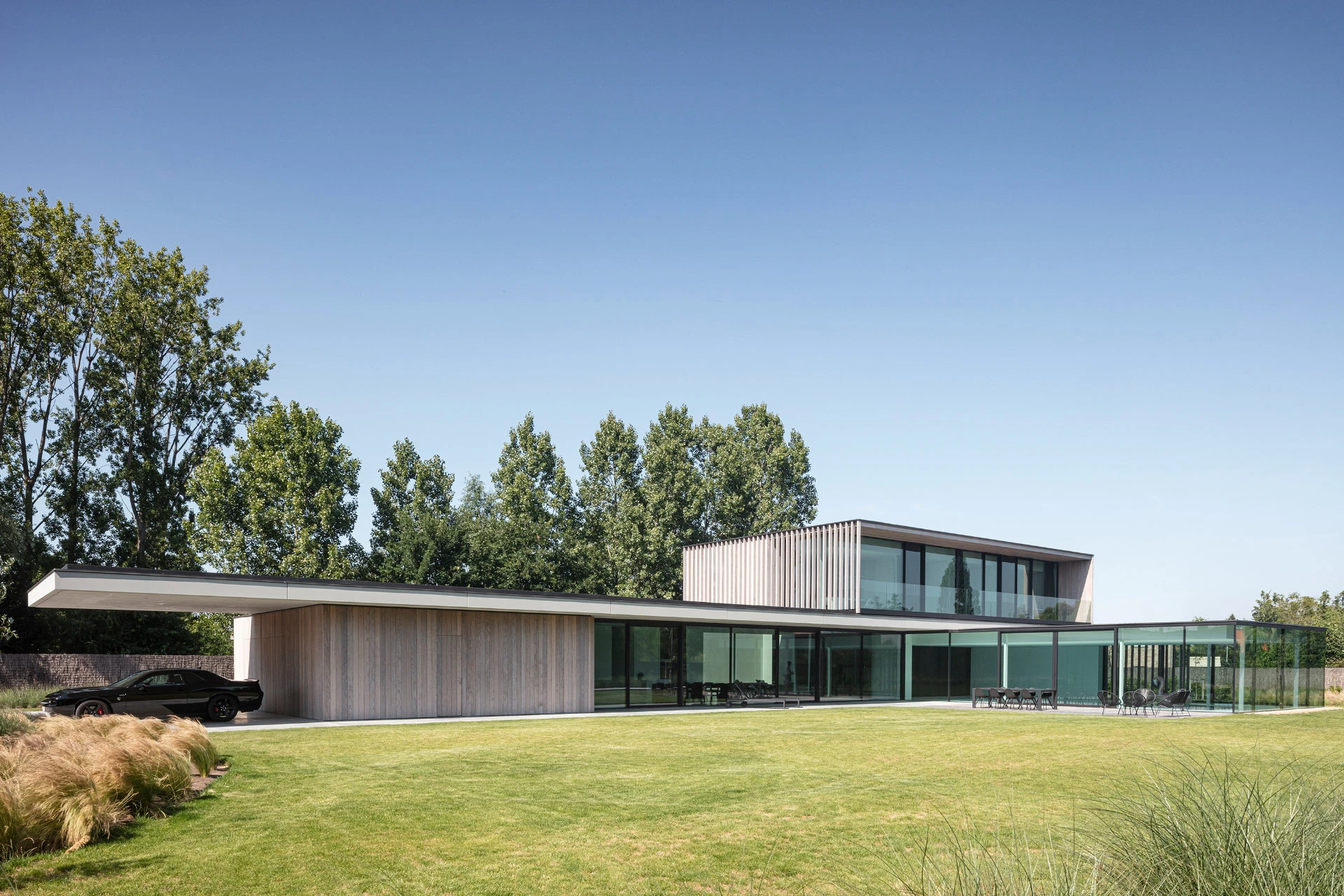Annual|Design Studio|DETAIL’22
Benny Govaert
1962 Born in Bruges, Belgium
1983-1985 Studied Architecture at the Higher Architecture Institute in Ghent
1986 Graduated Degree in Town and Country-Planning from the University of Leuven
1989 Established of Govaert&Vanhoutte Architects
Damiaan Vanhoutte
1963 Born in Kortrijk, Belgium
1983-1985 Studied Sculpture at the St.-Lucas Institute in Ghent
1986 Studied Architecture at the Higher Institute of Architecture in Ghent
1989 Established of Govaert&Vanhoutte Architects

The detailing in our work is a long term investigation, a continuous search as to how a combined set of architectural elements can resist mechanical forces, withstand the power of nature, fulfil its function within the whole, and at the same time give us the comfort of an aesthetic image. This is a process of transgression. It is a continuous process in which different aspects evolve and give direction towards the aimed result. While gaining insight in the various aspects of creating a building, details evolve simultaneously, like development in production and technology does. It is this on-going search for new materials, the investigation and experimentation with these materials, and the construction and evaluation on site, that result in how buildings endure over time. Our creativity is performed through the way we choose to put specific architectural elements together. We take these elements into account in terms of the role they fulfil in the construction and perception of a building.
As we pursue a certain level of abstraction in our buildings, we cope with detailing in the same way. Each part and each execution must, at its specific level, contribute to the pursued building concept. Aiming at abstraction in detailing implies that we part with all non-essential aspects. We consider the quantity and presence of materials, their physical qualities and properties, and the way they can be assembled. Due to the nature of the detailing we often push the chosen materials to their limits. In striving for innovation, we are in constant contact with engineers, production firms and contractors prepared to participate in the detailing process. The speed of this progress is strongly related to the evolution of our building concepts and the scale of our projects, nevertheless we maintain the steadiness of abstraction and strive for strong geometry.
要讓我們的作品細節臻於完善,必須經過長期的調查和持續的研究,例如研究如何讓一組建築元素相結合後成功地抵抗機械力,耐得住大自然的力量,或者如何發揮建築整體的功能,同時又能帶給我們美學意象上的舒適感。這是一個越界的過程,這是一個連續的過程,在這個過程中會發展出不同面向,並找尋出方向朝期待的結果前進。在建築誕生的過程中,除了會深入了解各個不同的面向,同時間也會發展出各種細節,一如產品開發和技術發展的過程。就是這段不斷找尋新建材,研究和實驗這些材料,而後在現場施工和評估的過程,左右著建築物如何歷經時間考驗的能力。我們的創意是透過我們選擇如何將特定建築元素結合在一起的方式來執行。我們會就一個建案在發想概念和施工時,這些元素能夠扮演什麼樣的角色加以考量。
當我們在建案中追求某程度的抽象概念時,我們也會以同樣的方式處理細節。每個部分、每個動作,對於實現建築概念都必須發揮特定程度的作用。依循著抽象概念來處理細節,意味著我們必須擺脫所有非核心面向。我們會將建材的數量和外觀,它們的物理特性和性能,以及組裝的方式都納入考量。由於追求細節的緣故,我們時常挑戰所選用建材的極限。為努力追求創新,我們總是不斷地與工程師、生產企業以及承包商保持聯絡,讓他們做好準備,與我們一起參與追求細節的過程。這個過程推進的速度與建築概念的發展和建案的規模有密切的關係,但無論如何,我們始終堅守它的抽象概念,並且努力創造出出色的幾何造型。


